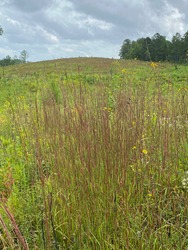Common Checkered-Skipper / White Checkered-Skipper Burnsius communis/albezens
COMMON AND WHITE CHECKERED-SKIPPERS ARE CONSIDERED TOGETHER IN THIS ACCOUNT. AT PRESENT, THESE TWO SPECIES CAN ONLY BE RELIABLY IDENTIFIED BY DISSECTION. BECAUSE THEY CANNOT BE DISTINGUISED IN THE FIELD, WE HAVE COMBINED THEIR DATA.
Butterfly: Wingspan: ¾ to 1¼ inches (1.9 - 3.2 cm). UPPER SURFACE (dorsal) Dark checkered pattern on both wings. Female darker than male. Long, bluish-white hairs over body and basal portion; more extensive in male. Row of tiny spots along outer wing edges; final dot at forewing tip is absent or very faint. UNDER SURFACE (ventral) Forewing like upper surface except paler. Hindwing dull white and crossed by three or four wavy, tan-colored bands (sometimes olive and tan) finely edged in black or brown. Checkered fringe.
ID TIp: On upper surface, in the row of tiny white forewing spots, the final spot at the tip is missing.
Egg: Whitish sphere with many ridges. Deposited singly on host leaves.
Caterpillar: Pale yellowish green. A darker green stripe runs the length of the upper body with two white stripes along each side. Body covered with fine white hairs and tiny tubercles. Head is black and densely covered with white hairs. Collar light brown at front, black at back with a shorrt white line in middle. First two pairs of legs (thoracic) are darker.
Chrysalis: Light brown head grading into light green thorax area. Abdominal area is yellowish. Black dots and dashes form bands on upper surface. Wing cases are greenish. Mature caterpillars overwinter.











_Charny.jpg)
_Charny.jpg)
_Charny.jpg)









_Charny.jpg)

















